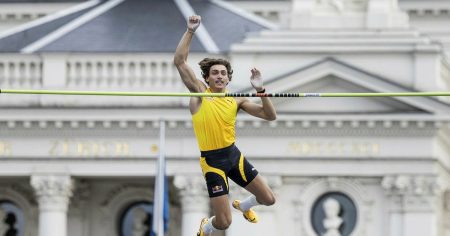Iivo Niskanen’s withdrawal from the Tour de Ski, announced just a day before the prestigious cross-country skiing event was set to commence in Toblach, Italy, casts a shadow over the Finnish team’s prospects. Niskanen, a decorated athlete with both Olympic and World Championship gold medals to his name, expressed his disappointment on Instagram, lamenting the disruption to his holiday plans and the forced forfeit of the Tour. His absence is a significant blow, given his strong performance in the 2021-22 Tour de Ski, where he secured an impressive third-place overall finish. This news follows a string of setbacks for the Finnish ski team, including Perttu Hyvärinen’s withdrawal due to illness contracted after the World Cup races in Davos. The cumulative effect of these absences significantly weakens the Finnish contingent heading into a crucial period of the competitive season.
The timing of Niskanen’s withdrawal is particularly unfortunate, coming as it does on the eve of the Tour’s opening sprint races in Toblach. The Italian venue, known for its challenging courses and enthusiastic crowds, would have provided a vibrant backdrop for Niskanen’s powerful skiing style. His absence deprives the Tour de Ski of one of its most compelling competitors and leaves a void in the field of elite skiers vying for the coveted overall title. The news also resonates with fans who anticipated witnessing Niskanen’s prowess on the demanding Italian slopes. The circumstances surrounding his withdrawal, though not explicitly detailed, suggest a health issue or personal commitment that necessitated the difficult decision.
Niskanen’s absence is further compounded by the withdrawal of fellow Finnish skier Perttu Hyvärinen, who succumbed to illness following the World Cup races in Davos, Switzerland. Hyvärinen’s absence further depletes the Finnish team’s strength and underscores the challenges faced by athletes navigating a demanding competitive schedule while maintaining optimal health. The combined loss of both Niskanen and Hyvärinen places additional pressure on the remaining Finnish skiers to perform well and uphold the nation’s strong tradition in cross-country skiing. It remains to be seen how the team will adapt to these unexpected setbacks and how it will impact their overall strategy for the remainder of the season.
The Tour de Ski, a grueling multi-stage race spanning multiple venues and disciplines, demands peak physical and mental fortitude from its participants. The race, often considered a mini-Tour de France of cross-country skiing, tests athletes’ endurance, speed, and tactical acumen over a variety of terrains and weather conditions. The absence of key contenders like Niskanen inevitably alters the competitive dynamics and opens opportunities for other skiers to step up and challenge for podium positions. The reshuffling of the field creates a sense of anticipation and uncertainty, adding another layer of intrigue to the already compelling narrative of the Tour de Ski.
Niskanen’s Instagram post, while brief, conveys a sense of frustration and disappointment. His comment, ”We’ll see next year…” suggests a determination to return to the Tour de Ski in the future and reclaim his position among the top contenders. While his current focus may be on recovery and addressing the reasons behind his withdrawal, his statement hints at a long-term vision that includes a return to the demanding challenges of the Tour. This resilience and forward-looking perspective bodes well for his future competitive prospects.
The withdrawals of Niskanen and Hyvärinen from the Tour de Ski highlight the inherent uncertainties and challenges inherent in elite athletic competition. Illness, injury, and unforeseen personal circumstances can disrupt even the most meticulously planned training regimens and competitive schedules. These setbacks serve as a reminder of the fragility of peak performance and the importance of adaptability and resilience in navigating the unpredictable landscape of professional sports. While their absence undoubtedly impacts the Finnish team and the overall competitive landscape of the Tour de Ski, it also creates opportunities for other athletes to emerge and demonstrate their capabilities on the international stage. The unfolding drama of the Tour de Ski, now unfolding without these two key figures, promises to be a compelling narrative of perseverance, unexpected triumphs, and the enduring spirit of competition.














